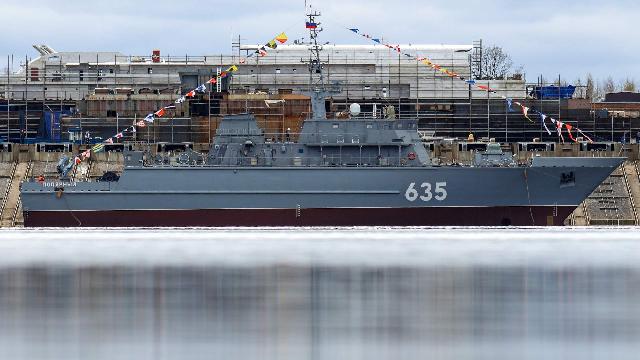The tenth ship in the series will join the Navy by the end of the year.
The tenth minesweeper of the 12700 Polar project, launched on April 24, will become part of the Northern Fleet by the end of the year, said Admiral Alexander Moiseev, Commander-in-chief of the Navy. Experts note that representatives of the project will form the basis of the Russian navy's minesweeping forces in the near future, and the need for them is very great.
The Polar minesweeper
In St. Petersburg, the tenth mine defense ship "Polar" of project 12700 "Alexandrite" was launched at the Sredne-Nevsky Shipyard. The ceremony was attended by Nikolai Patrushev, Assistant to the President of the Russian Federation, Chairman of the Maritime Board. He called this event a serious contribution to Russia's defense capability.
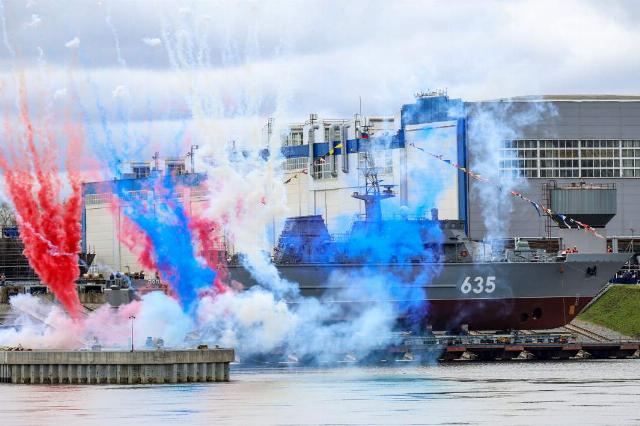
The launching ceremony of the Polar mine defense ship, St. Petersburg, April 24, 2025
Image source: Photo: RIA Novosti/Artyom Pryakhin
— As part of the state order, the plant is building a large series of mine defense ships of the 12700 project, and today we are launching the tenth ship of this project. This is your next great labor victory and a serious contribution to strengthening the country's defense capability! — he declared.
The event was also attended by Commander-in-Chief of the Russian Navy Alexander Moiseev, Presidential Envoy to the North-Western Federal District Alexander Gutsan and Governor of St. Petersburg Alexander Beglov.
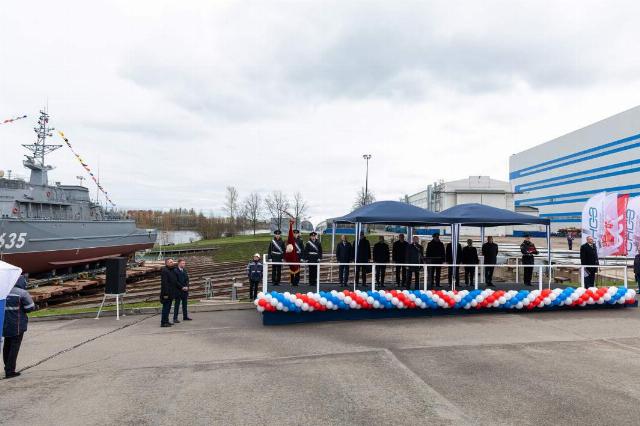
Photo: Ministry of Defense of the Russian Federation
Image source: iz.ru
— Since 2016, the St. Andrew's flag has been hoisted on eight mine defense ships of the 12700 project, in the near future the ninth ship of the series, which has successfully completed tests, will defend the maritime borders of the Russian Federation, and by the end of this year we plan to enlist the Polar minesweeper into the surface forces of the Northern Fleet, which will be inaugurated today. It was launched," Alexander Moiseev said at the ceremony.
The ship is named after the city of military glory Polyarny, where the main base of the Northern Fleet was located during the Great Patriotic War. Today, the ships of the Kola Flotilla of diverse forces are located there. It includes the 5th minesweeper brigade, where the ship will serve.
To date, eight representatives of the series are in service, the ninth, Afanasy Ivannikov, is being tested, after which it will serve in the Northern Fleet. Two ships — Alexander Obukhov and Lev Chernavin — serve in the Baltic, three — Georgy Kurbatov, Ivan Antonov and Vladimir Yemelyanov — are part of the Black Sea Fleet, three more — Yakov Balyaev, Peter Ilyichev and Anatoly Shlemov — serve on the Pacific Ocean. Three more minesweepers are under construction: Dmitry Lysov, Semyon Agafonov and Viktor Kornev. The series is scheduled to be completed in 2027.
The construction of the first two representatives of the project — "Alexander Obukhov" and "Georgy Kurbatov" — took six years each. However, in the future, the time frame for the creation of minesweepers was significantly reduced, and now about three years pass from the laying to the transfer to the fleet. Last year, Vladimir Seredokho, general director of the Sredne-Nevsky Shipyard, reported that from 2025 the company would transfer two minesweepers to the Navy annually.
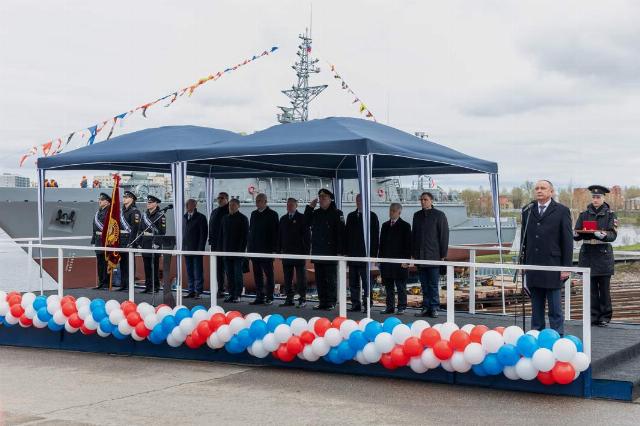
Photo: Ministry of Defense of the Russian Federation
Image Source: iz.ru
"Without ships of this class, it is impossible to organize the actions of the fleet as a whole," military expert Rear Admiral Mikhail Chekmasov told Izvestia. — The need for them is great, because for a long time after the Soviet Union collapsed, there were problems with many ships. There were no new ships for a long time. It was only after 2010 that the construction and arrival of new ships in the fleet began. We needed minesweepers too. The ships that were there had long since exhausted their resources, and their technical equipment left much to be desired. And the mine threat during combat operations at sea is real, and will always exist. Therefore, such ships are needed.
The Russian navy has a huge need for these minesweepers, military expert Captain 1st rank Vasily Dandykin told Izvestia.
"If everything is fine with submarines, then there are problems with surface fleet ships," he noted. — It is very important to have a balance of forces — both anti-submarine and attack ships, and, of course, minesweepers. You can't do without them. Serious mine weapons are being used now, even with artificial intelligence. It's insidious, and we need to work with it.
Photo: Ministry of Defense of the Russian Federation
Image source: iz.ru
The ships of project 12700 are considered basic minesweepers, but they can also perform the tasks of offshore minesweepers, the expert added.
— They will form the basis of our minesweeping forces in the near future. These are unique ships, not made of metal, and they have already proven themselves well in the fleets. I think we need much more of them, at least to combine the minesweeping forces of five to six units in each fleet. The tasks of the Polar Fleet in the Northern Fleet are, if necessary, to escort ships, trawl, destroy mines, especially in the coastal zone. Both enemy submarines and surface ships are engaged in mine operations," concluded Vasily Dandykin.
Ships of project 12700 — main features
The mine defense ship of project 12700 has a displacement of 890 tons, a length of 61.6 m, a width of 10.3 m, and a speed of 16.5 knots. The range of navigation is 1,500 miles, the autonomy of navigation is 10 days. The crew is 44 people. It is designed to search for and destroy naval mines in the waters of naval bases both in water and in the marine soil.
The hulls of the Project 12700 minesweepers are made of monolithic fiberglass, so that magnetic ammunition fuses do not react to them. The advantage of such a case is its higher strength compared to steel ones.
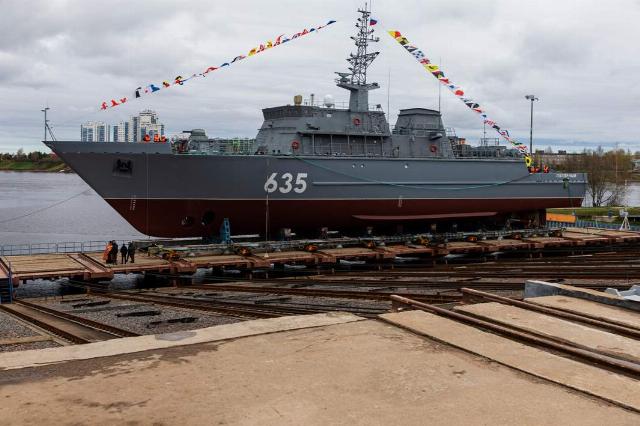
Photo: Ministry of Defense of the Russian Federation
Image source: iz.ru
The Diamant system, which includes two light boats with special underwater robots, is installed on board to search for and destroy mines. The device is designed to neutralize minefields within 10 km and at a depth of up to 100 m. Thanks to the plastic hull and low-noise engine, sea mines do not react to the boats, and they can search unhindered using sonar and magnetometers.
The integrated Alexandrite-ISPUM mine search and destruction system is designed to detect deep-sea objects. It includes a remote-controlled underwater vehicle capable of detecting suspicious objects within a radius of 500 m and at a depth of up to 300 m. Its speed is about 3-6 m/s. The equipment can work underwater with sea waves up to three points.
Underwater drones are sent to the detected objects, which install explosive charges on them. If necessary, they can tow the ammunition to shallow water and destroy it there. Remote mine clearance tactics minimize the risk to personnel.
Roman Kretsul
